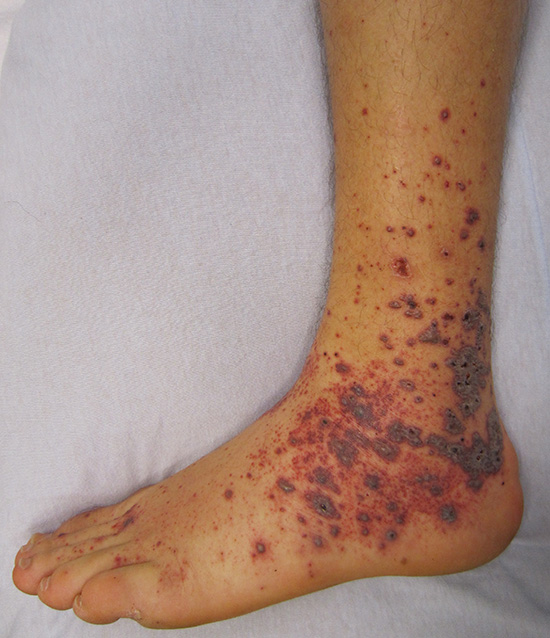
#Pinpoint rash skin#
Skin biopsy is nonspecific and not often done, * but it can help exclude other conditions Skin biopsy is nonspecific and not often done *Įrythema edema vesicles bullae in linear or geometric pattern common causes include cosmetics, topical medications, metal, latex, poison ivy, textiles, dyes, sunscreens, cement, food, benzocaine, neomycin 13 keys to diagnosis are linear or geometric pattern and distribution of lesions 11ĭry skin pruritus erythema erythematous papules excoriations scaling lichenification accentuation of skin lines keys to diagnosis are pruritus, eczematous appearance of lesions, and personal or family history of atopy 12 Part II focuses on the clinical features that can help distinguish these rashes. Part I of this two-part article focuses on differential diagnosis of generalized rashes. Rashes that primarily affect pregnant women, newborns, immunocompromised persons, and persons living outside North America are also excluded. Generalized rashes that manifest only as purpura or petechiae will not be discussed, with the exception of meningococcemia and Rocky Mountain spotted fever (because these conditions often present initially with nonspecific maculopapular rashes before becoming purpuric). 10 Therefore, a broad perspective is maintained in this article. 8, 9 Physicians, however, cannot limit their considerations they must constantly guard against premature closure of the diagnostic process. Previous reviews have been limited to narrower topics, such as viral exanthems, 6 drug eruptions, 7 and rashes associated with fever. It is difficult to comprehensively review generalized rashes because the topic is so broad. This decision depends on the likelihood of a serious disorder and the patient's response to treatment. If the diagnosis remains unclear, the primary care physician must decide whether to observe and treat empirically, perform further diagnostic testing, or refer the patient to a dermatologist.

The tables describe the key clinical features and recommended tests to help accurately diagnose generalized rashes. In part I of this two-part article, tables listing common, uncommon, and rare causes of generalized rash are presented to help generate an inclusive differential diagnosis. When a specific diagnosis is not immediately apparent, it is important to generate an inclusive differential diagnosis to guide diagnostic strategy and initial treatment. A rapid and accurate diagnosis is critically important to make treatment decisions, especially when mortality or significant morbidity can occur without prompt intervention.

Tick bites are usually painless, and many people do not remember being bitten.Signs and symptoms of ehrlichiosis typically begin within 1-2 weeks after the bite of an infected tick.


 0 kommentar(er)
0 kommentar(er)
